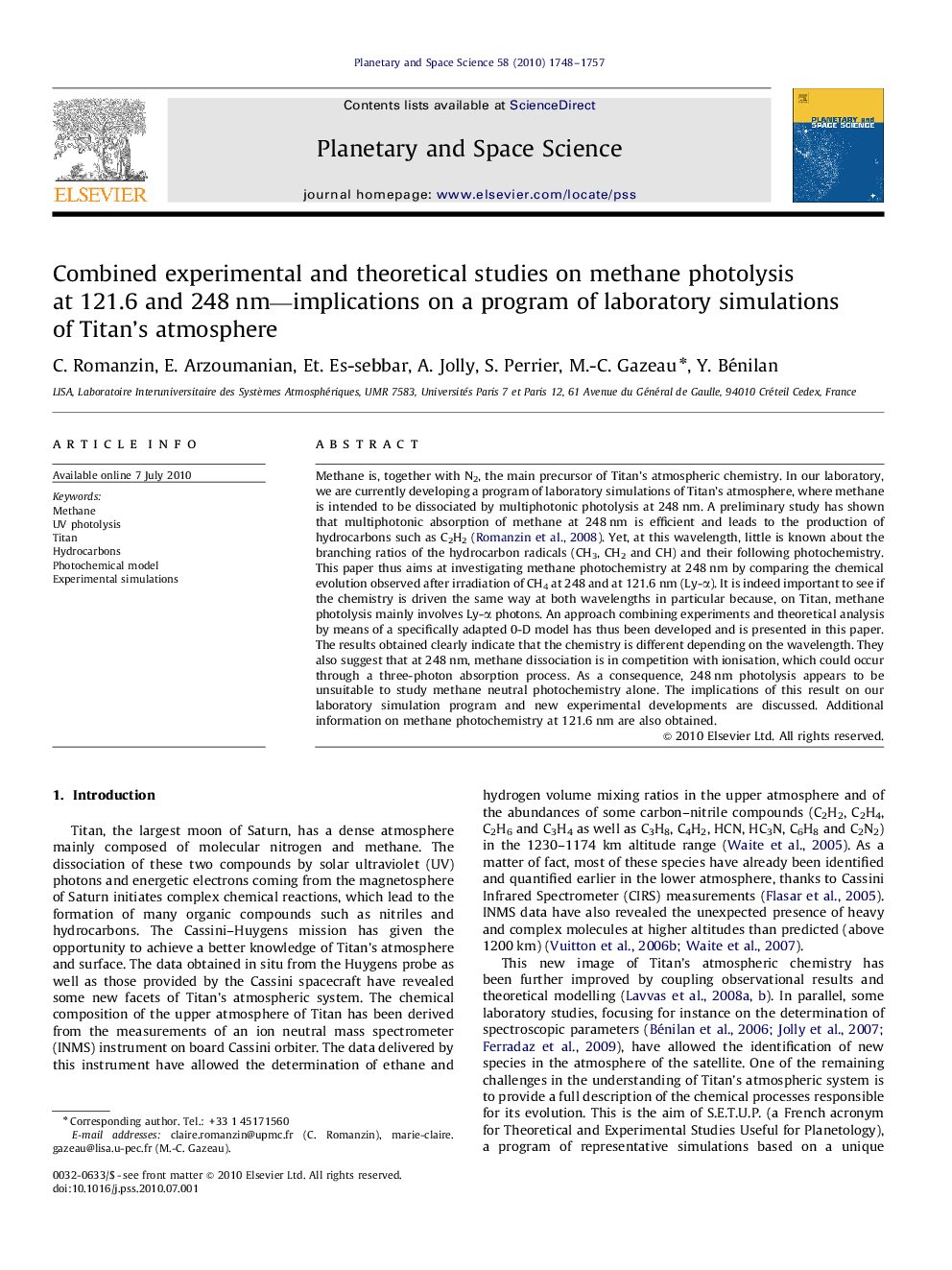| Article ID | Journal | Published Year | Pages | File Type |
|---|---|---|---|---|
| 1781697 | Planetary and Space Science | 2010 | 10 Pages |
Methane is, together with N2, the main precursor of Titan’s atmospheric chemistry. In our laboratory, we are currently developing a program of laboratory simulations of Titan’s atmosphere, where methane is intended to be dissociated by multiphotonic photolysis at 248 nm. A preliminary study has shown that multiphotonic absorption of methane at 248 nm is efficient and leads to the production of hydrocarbons such as C2H2 (Romanzin et al., 2008). Yet, at this wavelength, little is known about the branching ratios of the hydrocarbon radicals (CH3, CH2 and CH) and their following photochemistry. This paper thus aims at investigating methane photochemistry at 248 nm by comparing the chemical evolution observed after irradiation of CH4 at 248 and at 121.6 nm (Ly-α). It is indeed important to see if the chemistry is driven the same way at both wavelengths in particular because, on Titan, methane photolysis mainly involves Ly-α photons. An approach combining experiments and theoretical analysis by means of a specifically adapted 0-D model has thus been developed and is presented in this paper. The results obtained clearly indicate that the chemistry is different depending on the wavelength. They also suggest that at 248 nm, methane dissociation is in competition with ionisation, which could occur through a three-photon absorption process. As a consequence, 248 nm photolysis appears to be unsuitable to study methane neutral photochemistry alone. The implications of this result on our laboratory simulation program and new experimental developments are discussed. Additional information on methane photochemistry at 121.6 nm are also obtained.
